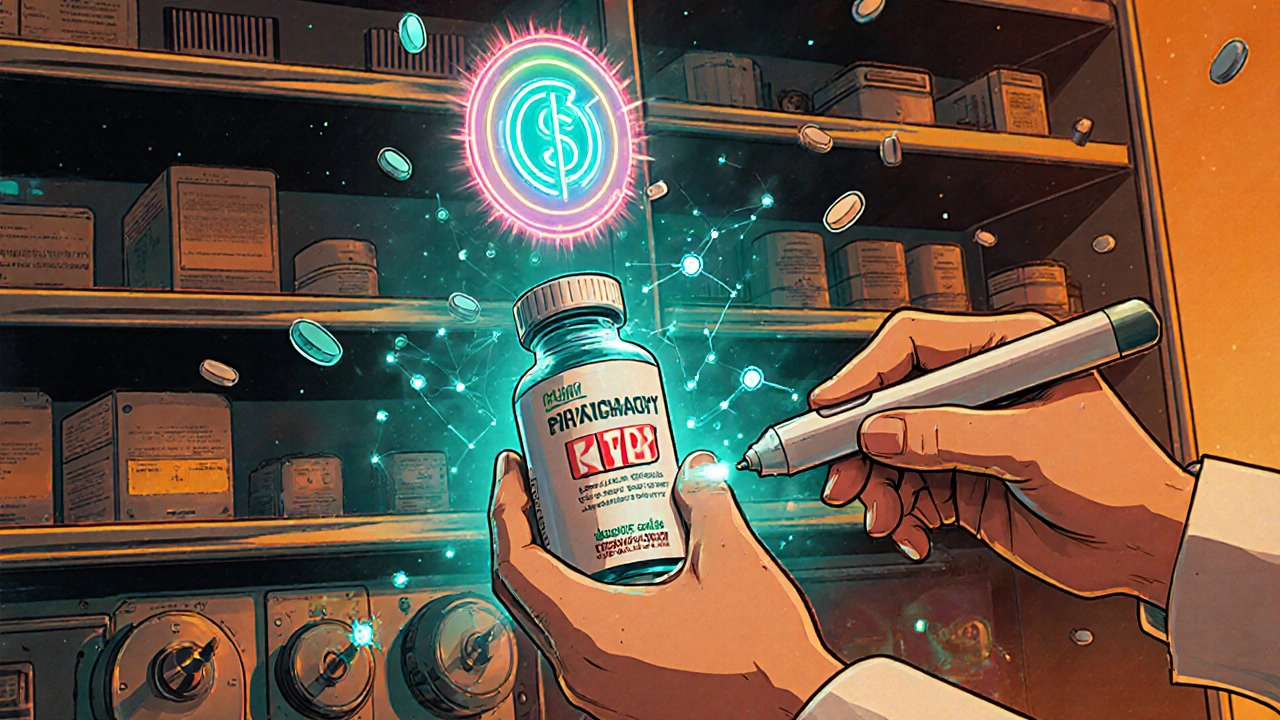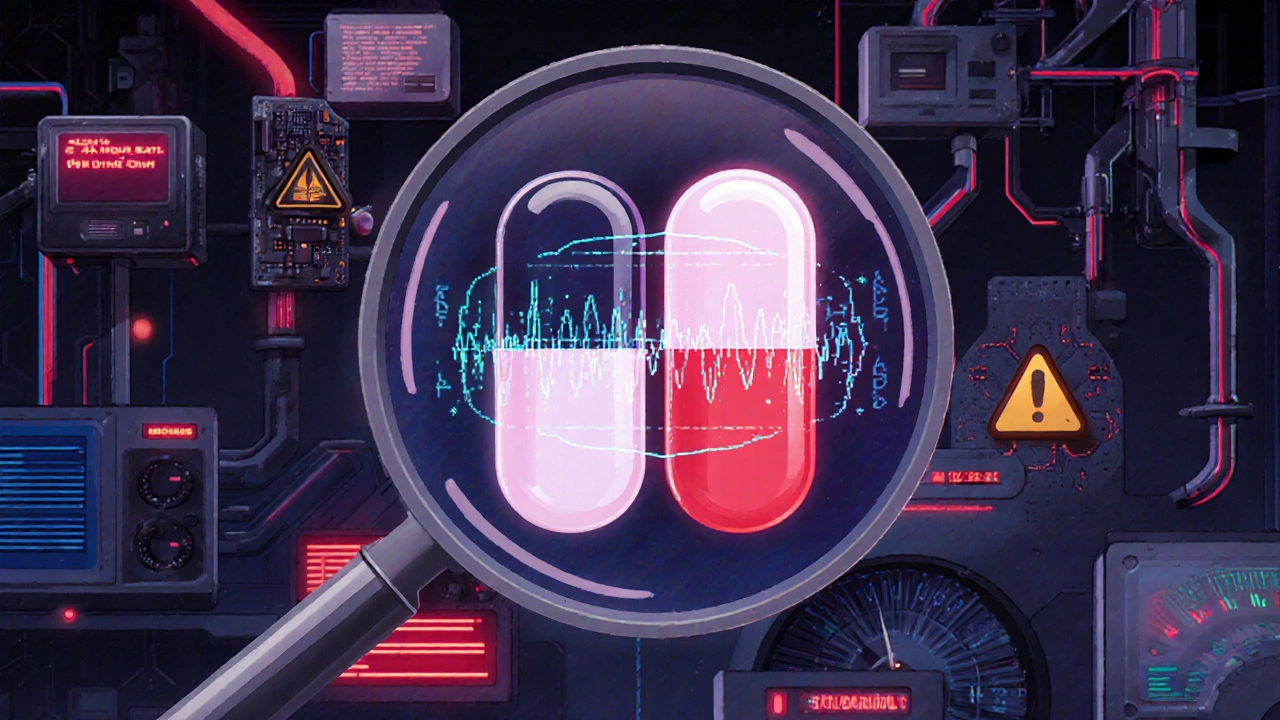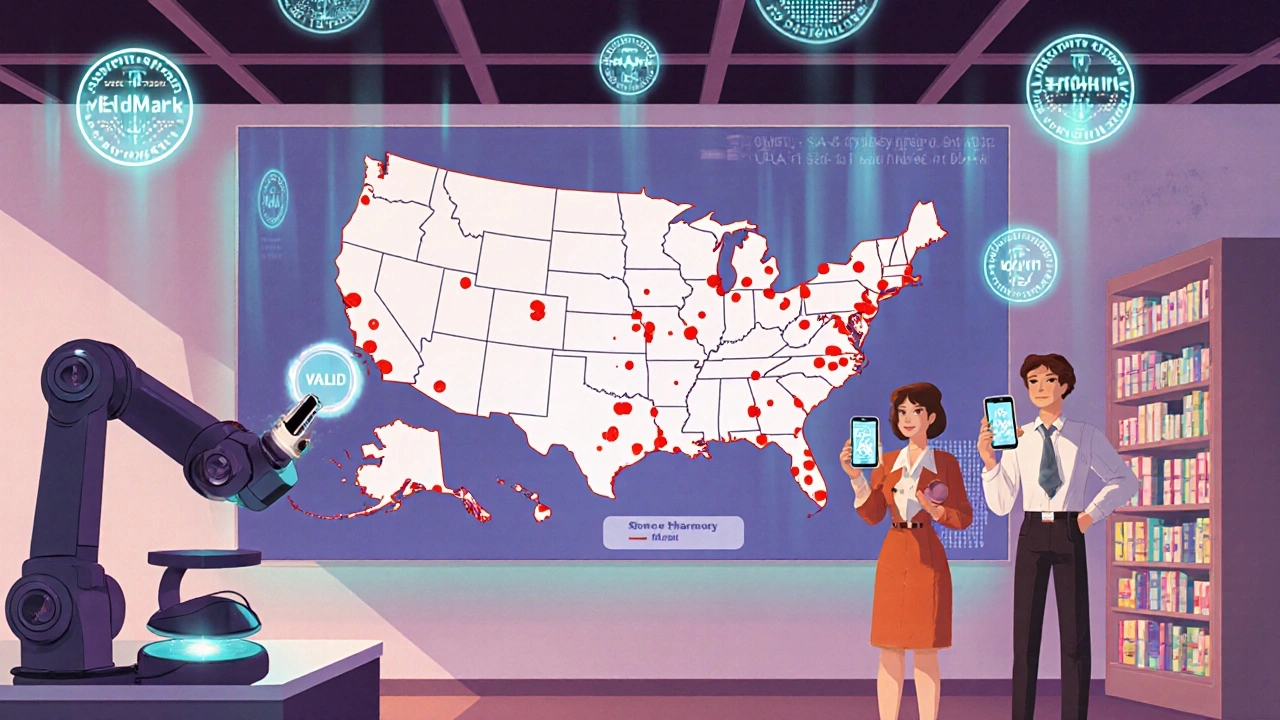Packaging and Labeling: How to Verify the Authenticity of Generic Medicines

Why generic medicine packaging can’t be trusted anymore
You pick up your generic metformin at the pharmacy. The bottle looks right. The label matches the prescription. But what if it’s fake? Counterfeit generic drugs are no longer rare outliers-they’re a growing threat, especially in regions with weak supply chain oversight. The World Health Organization estimates that up to 10% of medicines worldwide are fake, and in some countries, that number climbs to 30%. These aren’t just ineffective pills-they can kill. One wrong batch of counterfeit antimalarials or antibiotics has led to treatment failure, antibiotic resistance, and even death.
What makes this worse? Generic drugs are cheaper, so manufacturers often cut corners. Security features like holograms, UV inks, and serialized barcodes are expensive to add. Many generic producers, especially outside the U.S. and EU, skip them entirely. Even when they’re present, counterfeiters have gotten smarter. They now replicate packaging with 90-95% accuracy, according to INTERPOL’s 2023 Operation Pangea report. That means your eyes alone aren’t enough.
What to look for: The three layers of verification
Verifying a generic medicine isn’t about checking one thing. It’s about using three overlapping layers: overt, covert, and track-and-trace features. Each layer adds a barrier against fakes.
- Overt features are visible to anyone. Think color-shifting ink, holograms, or embossed logos. Pfizer’s Viagra uses Optically Variable Ink that shifts from green to blue when tilted. If your generic version doesn’t change color-or if the shift looks blurry-it’s a red flag. Holograms should show sharp, clear microtext (usually 50-100 micrometers). If it looks printed, not etched, it’s likely fake.
- Covert features need a simple tool. UV lights (365nm wavelength) reveal hidden inks used by Johnson & Johnson on Tylenol and other brands. A $20 handheld UV pen can check this. Some packages include chemical taggants like Lumilink® UV markers, detectable with handheld readers costing $200-$500. These are rare on generics, but if they’re supposed to be there and aren’t, that’s a problem.
- Track-and-trace systems use unique serial numbers. In the U.S., the DSCSA law requires every package to have a 2D barcode with a unique serial number, lot number, and expiration date. Pharmacies scan these into the system. If the barcode doesn’t validate or shows a mismatched lot number, the product is flagged. The EU’s Falsified Medicines Directive (FMD) has done the same since 2019. But here’s the catch: 35-45% of generic medicines still lack consistent serialization, according to the 2023 Generic Pharmaceutical Association report. So even if the system works, the data might be missing.
How spectroscopy catches fakes your eyes can’t see
Visual checks are helpful, but they’re not enough. The real game-changer is spectroscopy-using light to analyze the chemical makeup of the pill itself.
Handheld devices like the Thermo Fisher TruScan® RM and B&W Tek NanoRam® use near-infrared (NIR) or Raman spectroscopy to detect differences in the active ingredient, binders, or coating. A counterfeit metformin tablet might look identical, but its chemical signature is off. In a 2020 study published in the American Pharmaceutical Review, NIR spectroscopy caught Plavix® generics with correlation coefficients below 0.85-meaning they weren’t the real thing. The FDA’s Product Quality Research Institute requires verification tools to be at least 95% accurate under field conditions.
Here’s what’s important: NIR spectroscopy works best for spotting coating defects and moisture changes. Raman spectroscopy is better at identifying the actual active pharmaceutical ingredient (API), but it struggles with dark-colored tablets because of fluorescence interference. Neither is perfect alone. But when combined with packaging checks, detection rates jump to 98.7%, according to a 2023 study in the Journal of Pharmaceutical Analysis.
Cost is a barrier. These devices run $15,000-$50,000. But for pharmacies handling hundreds of generics daily, the investment pays off. In a 2023 Drug Topics survey, pharmacists using the NanoRam® reported 94% satisfaction. One said: “It caught a fake metformin that looked identical. Saved a patient from potential harm.”

The hidden problem: Why generics are harder to verify than branded drugs
Branded drugs have deep pockets. They spend 0.7-1.1% of revenue on anti-counterfeiting tech. Generics? They spend 1.2-1.8%. Why? Because margins are thin. A generic metformin pill might sell for 10 cents. Adding a hologram or encrypted barcode adds 2-3 cents. For a company selling millions, that’s a big cost.
That’s why 68% of community pharmacists say verifying generics is harder than verifying branded drugs, according to the National Community Pharmacists Association’s 2022 survey. The top two reasons? Inconsistent security features (84%) and no reference samples to compare against (76%).
Imagine this: You get a new batch of generic lisinopril. The label looks different. The font is slightly off. The barcode scans, but the lot number doesn’t match the manufacturer’s database. You don’t have the original packaging from last month to compare. What do you do? Most pharmacists are left guessing. That’s why regional verification centers-now active in 22 U.S. states-are becoming critical. These centers store authentic samples and help pharmacies cross-check suspicious products.
What’s changing in 2025-and what’s still broken
The EU is pushing harder. Starting January 1, 2025, all generic medicines must include 2D data matrix codes with cryptographic authentication. This means each code is digitally signed, making it nearly impossible to copy without the manufacturer’s key.
In the U.S., the Generic Pharmaceutical Association aims for 100% serialization of all generics by 2026. The FDA’s 2023 pilot program using blockchain to track generics through four distribution tiers achieved 99.2% accuracy. That’s promising.
But global gaps remain. In sub-Saharan Africa, 80% of clinics can’t afford spectroscopy devices or even stable internet for scanning barcodes. Mobile verification apps like MediMark work only 65% of the time in Nigeria due to poor connectivity. In Southeast Asia, only 45% of manufacturers comply with basic verification standards, compared to 98% in the EU.
And counterfeiters aren’t standing still. INTERPOL’s 2023 report found new fakes that replicate UV inks, holograms, and even serialized barcodes. The only solution? Layering methods. Relying on one system-whether it’s a barcode, a hologram, or a mobile app-is asking for trouble.

What you can do: A practical checklist for patients and pharmacists
You don’t need a lab to spot red flags. Here’s a simple checklist:
- Check the packaging-Is the color-shifting ink visible? Does the hologram look crisp, or is it blurry? Are there spelling errors or mismatched fonts?
- Use a UV light-If the manufacturer says there’s UV ink, shine a 365nm light on the label. Look for hidden text or logos. If nothing appears, ask the pharmacist.
- Scan the barcode-Use a trusted app like MediMark or the manufacturer’s portal. If it says “invalid” or “no match,” don’t take the medicine.
- Compare to past prescriptions-Did the pill color, shape, or imprint change? Did the bottle design shift? Even small differences matter.
- Ask your pharmacist-If you’re unsure, ask if they’ve verified the batch. Most independent pharmacies now have UV lights and access to manufacturer portals.
For pharmacists: Invest in a $20 UV pen and a reference sample library. Train staff for 1-2 hours on visual checks. If you handle high-volume generics, consider a handheld NIR device. The cost is high, but the liability of dispensing a fake is higher.
Final reality check: No single method is foolproof
Dr. Maria Kresal from the European Directorate for the Quality of Medicines says it best: “Over-reliance on packaging features alone is dangerous.” Modern counterfeiters replicate packaging with near-perfect accuracy. The only way to be sure is to verify the medicine itself-not just the box.
The future lies in combining methods: a barcode scan, a UV check, and a quick spectroscopy test if possible. It’s not perfect, but it’s the best we have. And as AI-driven verification systems grow-Gartner predicts 70% of pharmaceutical verification will use AI-enhanced multi-method approaches by 2028-things will get better.
For now, stay alert. Question inconsistencies. Demand verification. Your health depends on it.
How can I tell if my generic medicine is fake just by looking at it?
Look for color-shifting ink, sharp holograms, and consistent fonts. Fake packaging often has blurry images, mismatched colors, or spelling errors. Compare it to a previous bottle-if the pill shape, imprint, or bottle design changed, ask your pharmacist. Even small differences matter.
Can I use my phone to scan a barcode and check if a generic drug is real?
Yes, but only if the product is properly serialized. Apps like MediMark work well for branded drugs, but they fail 40-50% of the time with generics because many manufacturers don’t follow consistent serialization rules. If the scan fails or shows a mismatch, don’t take the medicine.
Are UV lights worth buying to check my meds at home?
Yes, if your medication is supposed to have UV features. A $20 UV pen can reveal hidden inks used by manufacturers like Johnson & Johnson. If you see nothing under the light, and the label says UV ink should be there, contact the pharmacy. But remember: UV checks only work if the feature exists-many generics don’t include it.
Why are generic drugs more likely to be counterfeit than brand-name drugs?
Generic drugs have thinner profit margins, so manufacturers often skip expensive security features like holograms and encrypted barcodes. Counterfeiters target them because they’re easier to replicate and sell in high volumes. In the U.S., generics make up 90% of prescriptions but only 22% of spending-making them a low-cost, high-reward target for fraudsters.
What should I do if I suspect a generic drug is fake?
Don’t take it. Return it to the pharmacy immediately and report it. Pharmacies are required to report suspected counterfeit drugs to the FDA. If you’re a patient, ask your pharmacist if they’ve verified the batch. If you’re a pharmacist, use a UV light, scan the barcode, and contact the manufacturer’s authentication portal. Never ignore a suspicious product.

Esperanza Decor
November 14, 2025 AT 09:17Also, why don’t pharmacists just show patients how to do this? It’s not that hard. A quick 30-second demo when you pick up a script could save lives.
Deepa Lakshminarasimhan
November 15, 2025 AT 10:18Erica Cruz
November 16, 2025 AT 10:01Let’s be real: if you’re on a $5/month generic, you’re already gambling. This article pretends there’s a solution when the only real solution is universal healthcare with centralized drug procurement. Everything else is theater.
Johnson Abraham
November 17, 2025 AT 21:44Shante Ajadeen
November 18, 2025 AT 18:41dace yates
November 19, 2025 AT 21:31Danae Miley
November 20, 2025 AT 12:36Charles Lewis
November 21, 2025 AT 21:20For those concerned about their own medications: reach out to your state’s pharmacy board. Many have verification hotlines. And if you’re a pharmacist: advocate for institutional funding for verification tools. Your community depends on it.